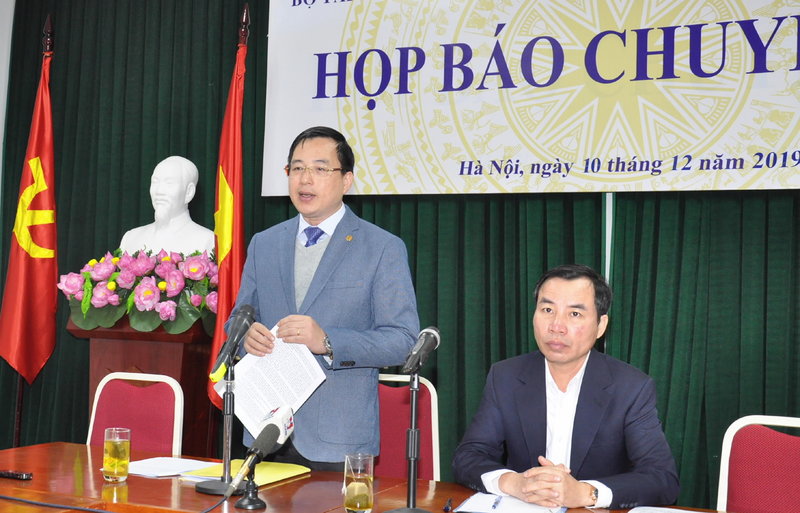Vietnam's SOE privatization meets just 28% of target
In 2019, nine state firms were supposed to proceed with privatization, but only three in the prime minister-approved list for privatization completed the process.
In the 2016 – 2019 period, only 36 out of 128 state-owned enterprises (SOEs) subject to privatization under the instruction of Prime Minister Nguyen Xuan Phuc completed the process, meeting 28% of the plan, according to Dang Quyet Tien, director of the Corporate Finance Department under the Ministry of Finance (MoF).
| Dang Quyet Tien (standing), director of the Corporate Finance Department under the Ministry of Finance (MoF). Source: MoF. |
The authority approved privatization schemes for 168 SOEs during the period with total asset value of VND443.05 trillion (US$19.03 billion), of which state capital makes up VND206.69 trillion (US$8.92 billion).
In 2019, nine SOEs were supposed to proceed with privatization, but only three in the PM-approved list for privatization completed the process, said Tien at a meeting on December 10.
Notably, SOEs subject to privatization in Hanoi and Ho Chi Minh City make up 54% of the total, but have not proceeded as planned, including 13 in Hanoi and 38 in Ho Chi Minh City.
According to Tien, the government plans to raise VND60 trillion (US$2.59 billion) from SOE privatization in 2017 – 2020. In 2019, 13 SOEs in the PM-approved list divested VND896 billion (US$38.7 million) in book value for VND1.83 trillion (US$79.05 million) in proceeds. As a result, 92 SOEs in the list completed the divestment process in the 2017 – 2019 period, collecting VND8.96 trillion (US$387.08 million) for VND4.7 trillion (US$203.04 million) in book value.
Outside the list, SOEs divested VND3.78 trillion (US$163.28 million) in book value for VND110.39 trillion (US$4.76 billion).
Tien said a number of SOEs remain slow in listing shares after privatization, causing negative impacts on the publicity and transparency of the market.
Tien attributed the lack of commitment from provinces/cities and SOEs in complying with the PM’s instruction for SOE restructuring to slow progress in the privatization process.
Additionally, problems in finance, land and laborers from periods prior to the privatization also hindered the process at target companies, said Tien.
The MoF would continue to notify SOEs that are sluggish in privatization, and work with other government agencies to speed up the process, said Tien.
In 2018, total assets of SOEs were estimated at VND2,937 trillion (US$126.89 billion), up 2% year-on-year, and revenue of VND1,559 trillion (US$67.35 billion), up 9%.
Tien said post-privatization SOEs tend to have positive business performance. The state is holding over 50% of charter capital at 180 SOEs, many of them are major corporations and those that provide public services.
Post-privatization SOEs posted revenue of VND643.81 trillion (US$27.81 billion) in 2018, up 14% year-on-year, resulting in a combined pre-tax profit of VND48.82 trillion (US$2.1 trillion), up 8%.












